The Luxurious Guide to National Parks
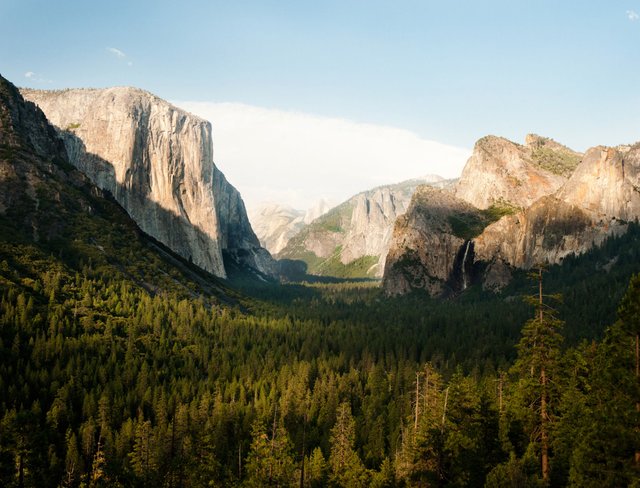
Visiting the major national parks is a rite of passage for every American kid—but what if your family’s not the type to pack up the tent and cooler and sleep out under the stars? As it turns out, America’s major parks are very well equipped for travelers that don’t consider themselves campers. The grand old parks (Yosemite, Yellowstone, Glacier) each have classic hotels inside their boundaries, complete with over-the-top “parkitecture,” featuring tall ceilings, fireplaces, and plenty of logs. Still others (Joshua Tree, Everglades, Rocky Mountain) are near enough to cities, so you can experience them during the day and head home to a luxury hotel with all the services and amenities that make a vacation relaxing and indulgent. Here, we’ve rounded up eight essential parks, including the can’t-miss attractions, and lodging options for even the most reluctant outdoorsman.
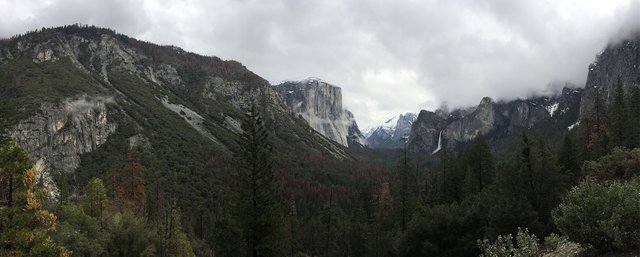
YOSEMITE
From the astounding peaks to the crashing waterfalls to the emerald green valleys, the contrasting beauty of this national park can render any visitor in awe. Spanning nearly 1,200 square miles in the Sierra Nevada Mountains of California and Nevada, Yosemite is rich in American history (it’s the nation’s third oldest park, after all). It’s crowded, but once you witness El Capitan, a 3,000-foot-tall rock formation, in person, you’ll understand why. To get the most out of your visit, pack in a lot of sightseeing by renting a car (this ingenious service offers vintage Roadsters and Model-Ts for rent) and consider something off the beaten path, such as Hetch Hetchy Valley or Tenaya Lake, which offer the same arresting experiences with a bit more elbow room than the always-packed Yosemite Valley. While every time of year will offer you an epic trip, the spring is our favorite, when the waterfalls are brimming—and since it never closes, be the early bird and hit the sites first thing in the morning to beat the crowds.
TThe Luxurious Guide to National Parks
TThe Luxurious Guide to National Parks
Tip
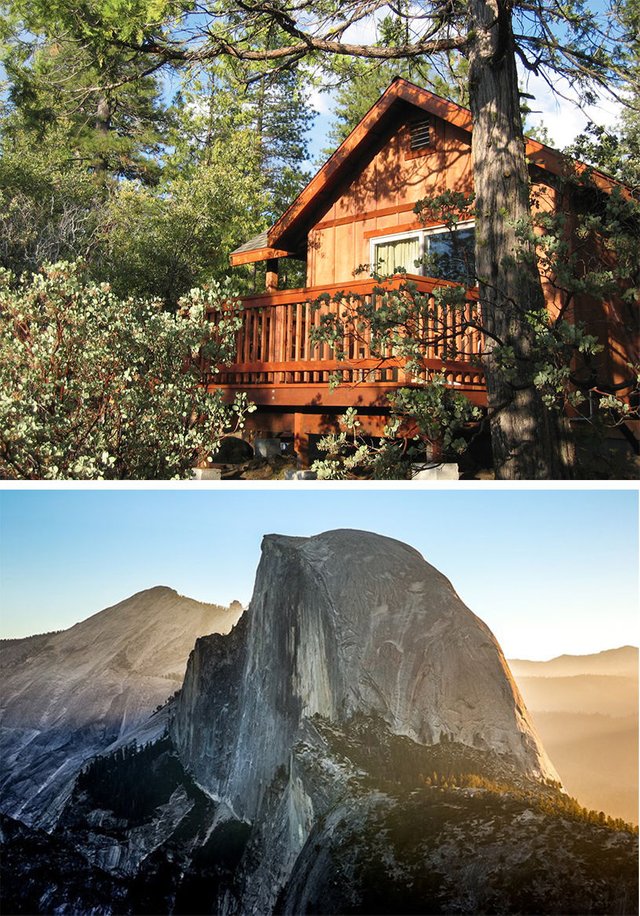
While we love visiting in the spring, a phenomenon happens in February at Horsetail Fall (on the east side) called a “firefall”—the striking result of the sun hitting a waterfall in a way that makes it look aflame—that is worth bearing the cold to see. The conditions have to be perfect (the sun’s angle, the amount of water run-off), which only happens for a few weeks in the winter. Also, per a park ranger’s insight, Yosemite is “very dynamic” in terms of elemental forces (think: experienced floods and rock falls), which can wreak havoc on a tightly planned itinerary—so always have a plan B.
In-Bounds
THE MAJESTIC
Since 1927, adventurous types who like to kick off their boots at the end of a long excursion have used this hotel (formerly known as the Ahwahnee) as their base camp in Yosemite. Watch out for bears as you make your way to the park’s main attractions like Yosemite Falls, Half Dome, or Glacier Point. When you’ve had your fill of the great outdoors, head indoors to a room in the lodge, many of which can be combined to accommodate big groups; they also have rustic cabins in the pines.
Out-of-Bounds
EVERGREEN LODGE
Sprawled out over twenty acres of woods on the outskirts of the park (not nearly as touristy as the center), Evergreen isn’t so much a hotel as it is a cluster of rustic cabins surrounding a communal main plaza…kind of like summer camp. You can easily day-trip down to Yosemite Valley, but with a pool, pop-up BBQs, two restaurants, an old-timey general store, and a slew of throwback activities (outdoor film screening, s’mores, bingo) offered right on property, you might not want to ever leave. There’s even a youth program to keep little ones occupied, as well as a custom camping option that offers fully-furnished tents so you can sleep under the stars.
Don’t Miss
ANSEL ADAMS
Admittedly, the center of a national park isn’t the likeliest of spots for a fine art gallery, and a really great one at that. As its name suggests, the focus here is on works from Ansel Adams, whose photographs of the park are icons and national treasures, though other artists are featured as well. A substantial part of the experience is the gift shop, which stocks an impressive selection of books, jewelry from local makers, and a small but mighty assortment of giftables.
HALF DOME VILLAGE
It’s worth forgoing TV for a night to stay in this iconic campground, formerly known as Curry Village. We wouldn’t call it glamping, necessarily, but the canvas tents are definitely several notches above any traditional ones and come with electricity. If you’re still wary, you can rent one of the cabins. A fun experience for kids and families—and the dining hall is a great place to meet visitors from around the globe (and eat some good pizza).
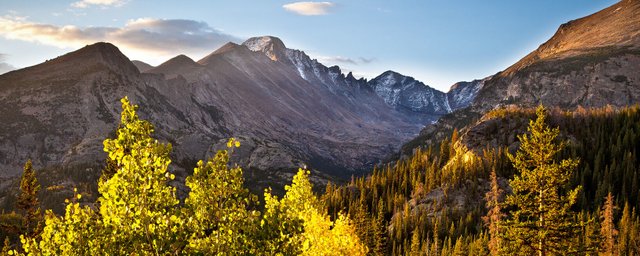
ROCKY MOUNTAIN NATIONAL PARK
There are few landscapes more iconic than the Rocky Mountains, so Rocky Mountain National Park (lovingly referred to as “Rocky” by rangers and locals) is one of the country’s essential parks. It’s also home to very photogenic wildlife, and it’s not unusual to see black bear, moose, marmots, and beaver while hiking and exploring—in the fall, the elk that live here enter their rut (or mating season), and visitors can catch males bugling and fighting. The main entrance to the park is through the gloriously kitschy town of Estes Park, which serves as home base for most people visiting the area. Rocky is relatively small, as national parks go, so the popular attractions like Bear Lake can be crowded in the summer—skip the crowds by visiting in the fall, when the aspens are changing colors, or winter, when the vistas are snow-capped and you can access snowshoeing and cross-country skiing trails from Estes Park.
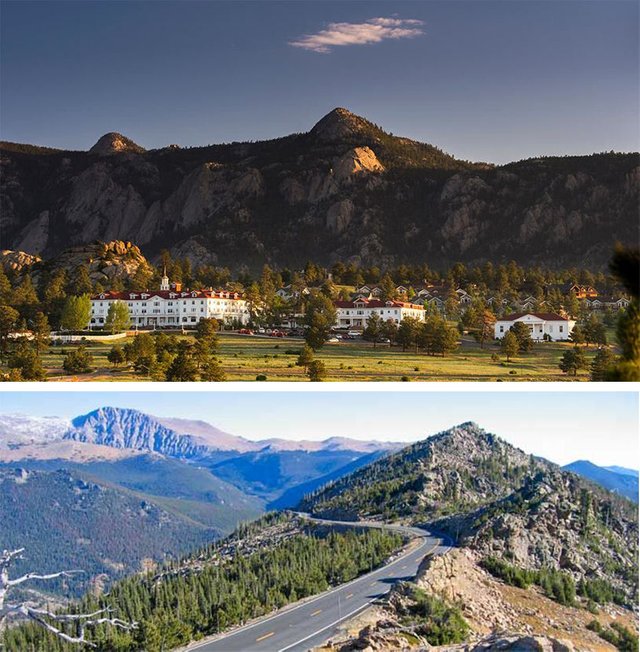
Tip
Much of Rocky Mountain National Park is above 12,000 feet (Long’s Peak, one of its most popular and difficult hikes is actually a 14er), so be prepared to encounter altitude sickness. As a preventative measure, drink plenty of water, and move at your own pace on the hiking trails.
In-Bounds
THE STANLEY HOTEL
Built in 1909, The Stanley was famously the inspiration for The Shining, and the hotel plays right into its reputation, offering a “night spirit tour” that features dark corners of the property where paranormal activity has been recorded. If you can get past the haunted element, though, it really is by far the nicest place to stay in Estes Park. Plus, it’s only a few miles from the park entrance, and a partnership with Kent Mountain Adventure Center means you can actually book guided hikes and other park activities along with your room.
Out-of-Bounds
THE ST. JULIEN
Rocky Mountain National Park is less than an hour’s drive from Boulder, so if rustic accommodations aren’t your thing, book a room at The St. Julien, which has all the trappings of a luxury hotel, including an excellent spa and a restaurant with a gorgeous view of the Flatirons. For our favorite nearby restaurants (and a few Boulder-based hikes that might be almost as good as what you’d find in the park), see our Denver/Boulder guide.
Don’t Miss
THE TRAIL RIDGE ROAD
Unlike many of the other Western parks, Rocky has never been accessible via train, so since the 1930’s, tourists came via car, usually traversing the Trail Ridge Road, a 48-mile scenic highway that bisects the park between its two main entrances, Estes Park and Grand Lake. The road is one of the most trafficked attractions in the park, so locals are split on whether to do it—some say it’s an iconic rite of passage, while others say it’s overcrowded. The best option: Split the difference and cycle the gorgeous, paved road in the fall, after it closes to vehicles and when the aspens are in full yellow glory.

YELLOWSTONE
Covering nearly 3,500 square miles–mostly in Wyoming with a small portion in Idaho and Montana—Yellowstone is grand in all ways. It’s the nation’s first national park and one of the largest, which can make it a bit overwhelming at times. To make this behemoth expanse more manageable, it’s best to focus on exploring specific parts, allowing one to two days for each. We like to start at the south end—either flying into Jackson, Wyoming, or Salt Lake City (the last option is about four hours away)—and drive north from there, but each entry point offers a unique perspective. As far as sightseeing goes, nothing beats this park’s wildlife—which is why we prefer to go during spring when the elk and bison are having their calves. Driving is the most popular way to see the park, and luckily most amenities are pretty accessible from the major roads, but it’s so rewarding to get out for a hike or walk and take in the epic views. Or if you really want to experience the park in complete luxury, Scott Dunn offers exceptionally tailored safaris that will take you to the most remote areas, some of which are not accessible to the public. They’ll handle it all for you—from the hotel, to the tours, to the meals—and cater to kids or all ages.
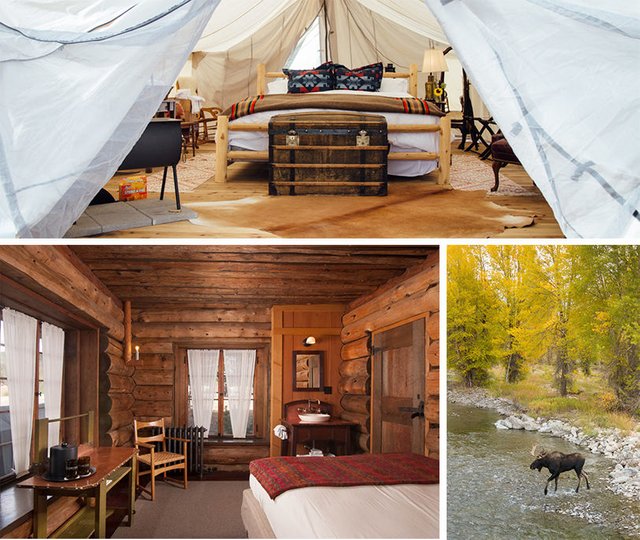
Tip
The 142-mile Grand Loop Road leads to most of the major park landmarks. Look at the park’s schedule of ranger-led programs to gain a sense of what is happening and where. And we cannot stress enough the importance of good sneakers or hiking boots and lots of layers!
In-Bounds
OLD FAITHFUL INN
Part historical attraction, part epic architectural feat (it is considered the world’s largest log structure), this rustic lodge dates back to the early 1900’s and is filled with the area’s rich history. The accommodations are basic and rustic, yet the environment is warm and convivial. The dining room restaurant churns out fresh fish, locally raised steaks, and plenty of vegetarian options—in fact, one goop staffer recalls having the veggie burger of her life here. Daily tours of the park are also on offer and the nearby Old Faithful Geyser, which shoots up to 8,000 gallons of hot water about every hour.
Out-of-Bounds
COLLECTIVE YELLOWSTONE
Beyond the high-tech camping fabrics and unglamorous tents, this is our pick for the most design-worthy camping site out there. Located about an hour west of the park’s boundaries, beneath Lone Peak, this collective of beautifully built canvas tents is roughing it at its best (and to say roughing it is a stretch). Each teepee-like tent is outfitted with chic, rustic furniture, a plush king-sized bed, and tribal decor. To make the entire camping experience pretty much labor-free, the full-service company schedules farm-to-table breakfasts and dinners cooked on site by a nearby chef.
Don’t Miss
BUFFALO BILL DAM WILDLIFE CENTER
Located about 45 miles east of the park’s east entrance, this was one of the first concrete dams built in the nation—and it is one impressive feat. Go for the engineering, the history (the dam was part of the Shoshone Project, which brought water to a parched area of Wyoming), and the art (there are five museums in one at the visitor center).
LAMAR VALLEY
We’ve seen bison, elk, bears, and even wolves at this wildlife hotspot. It’s worth booking a guided tour during the evening, which is when most of these animals are most active.

GRAND TETON
Though it’s home to one of the country’s best ski resorts, Jackson Hole, Wyoming is actually busier in the summer months, thanks to its close proximity (a quick 30-minute drive) to 500-square-mile Grand Teton National Park. Home to tons of wildlife (bear, elk, bald eagles), Grand Teton’s appeal has a lot to do with the epic views of its unique, craggly peaks and the rich history of the Old West, showcased via preserved homesteads from the 1800’s. There’s an endless list of activities to keep you busy here, and a deep rolodex of guides and outfitters to facilitate them; start with WorldCast Anglers for fly fishing, and Sands Whitewater for rafting tours of the Snake River. As an added bonus, Grand Teton is a reasonable distance from Yellowstone’s south entrance, so it’s entirely possible to tick off both major parks in one trip.
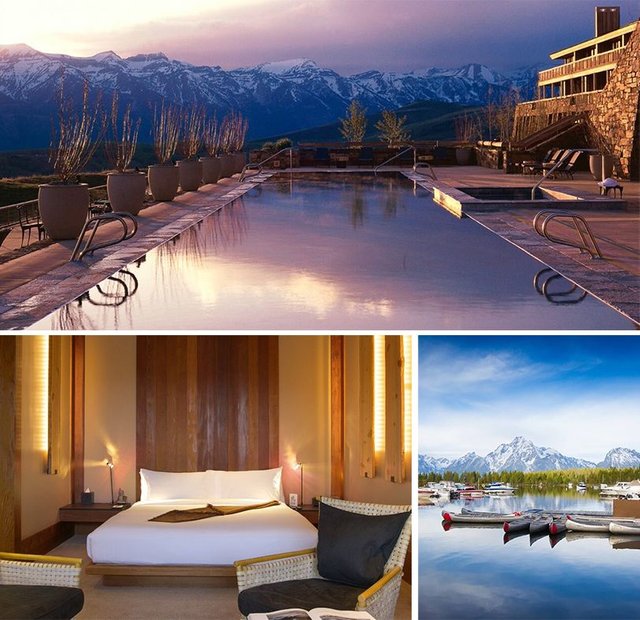
Tip
Grand Teton is popular year round, so if you’re looking to avoid the crowds, go late May, June, and September. Another genius resource: Teton Backcountry Rentals, which provides gear and camping equipment if you don’t want to schlep yours on the plane.
In-Bounds
THE JACKSON LAKE LODGE
Designed in 1950 by architect Gilbert Stanley Underwood at the request of John Rockefeller, The Jackson Lake Lodge is an elegant fusion of midcentury modern and rustic styles—probably the best part is the magnificent lobby, with its 60-foot windows and stunning views of the lake and surrounding mountains. The hotel itself is a bit of a compound: There are 400 rooms, a shopping center, and a full restaurant and bar.
Out-of-Bounds
AMANGANI
One of Grand Teton’s most significant advantages is its close proximity to Jackson Hole and its resorts. Our favorite by far: Amangani (which, appropriately, translates to “peaceful home”). The spa and wellness program here is to Aman standards, incorporating ancient healing rituals to address anything from sore limbs to energy rebalancing. (Oh, and the farm-to-table restaurant is some of the best food in town.)
Don’t Miss
JACKSON HOLE WILDLIFE SAFARIS
Jackson Hole Wildlife Safaris operates day trips and multi-day safaris in the park with photographers who are expert in finding both the park’s common animals (black bears, bison, elk, moose) and its recluses (grizzlies, wolves). Private trips are available for families, and workshops are an option for budding photographers.

GLACIER NATIONAL PARK
In his famous novel, Travels with Charley, John Steinbeck waxes poetic about Montana–and we understand why. “For other states I have admiration, respect, recognition, even some affection,” he wrote. “But with Montana it is love.” There is no better place to experience the landscape of this state–which evokes in us a total sense of reverence—than Glacier Park. Its majestic peaks and valleys makes you feel like you’re on the last place on earth. Later summer or early fall is by far the best time to visit to capitalize on the longer days, warmer temps, and least threat of snowfall cascading down the mountains. Toss your passport in your bag in case you want to cross the northern border into Canada.
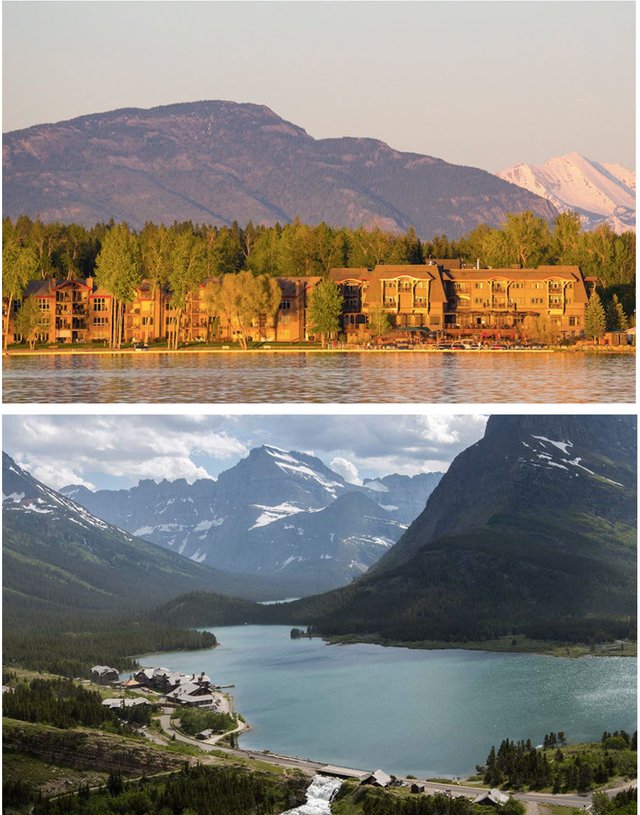
Tip
While the west side of Glacier has its absolute perks (closer to Lake McDonald, amazing hikes, gorgeous views), the east side is quieter and offers a more remote, off-the-grid feel. St. Mary Valley is the eastern gateway to the park and hosts the sparkling Lake St. Mary. Head there early to experience the quiet, humbling expanse—then take a 15-minute drive outside the park to Two Sister’s Cafe for a piece of homemade huckleberry pie.
In-Bounds
MANY GLACIER
Located on the other end of Going-to-the-Sun Road on the eastern edge of the park, this is inarguably one of our favorite hotels in the world. There are few amenities—the towels are more like washcloths and you won’t find fancy shampoo in the shower—but the Alpen-themed lodge, which dates back to 1915, sits on the edge of the surreally beautiful, glacial Swiftcurrent Lake. While rooms here tend to book up far in advance, it’s a sprawling place, and if you’re persistent, something usually opens up. The food is not going to blow your socks off, but it’s pretty much the only option, and after a long day of hiking, it’s totally sufficient. You can leave from here, on foot, for a handful of the park’s best hikes, including Grinnell Glacier and Iceberg Lake, though the lodge lobby, complete with a gigantic fireplace, is a nice place to read away the better part of an afternoon, too. Like with all the Glacier lodges, there are no TVs in the rooms, and there’s no cell service throughout the park, making this one of the few places where you can truly check out.
Out-of-bounds
LODGE AT WHITEFISH LAKE
About 40 minutes from West Glacier, this is inarguably the most luxe hotel in the area—but while it boasts more amenities, it’s not exactly fancy. The on-site restaurant, which offers great views of Whitefish Lake is really good, and there’s also a cute little coffee shop. The biggest benefits of the hotel are the fact that you can rent houses for big groups, and you can also rent boats and jet skis for a day out on the lake. Whitefish is about a 40-minute drive from West Glacier, but it’s a great small town, with a pretty epic assortment of cowboy bars on its main drag.
Don’t Miss
GOING-TO-THE-SUN ROAD
Going-to-the-Sun Road (which you might recognize from the beginning credits of The Shining), is a work of natural and man-made wonderment. Considered one of the most scenic drives in the world, this 52-mile stretch of mountain highway that crosses over the Continental Divide, lending a front-seat view to every type of terrain, from the alpine tundra to the glacial lakes. Simply stunning—and windy, so not for the weary driver.

EVERGLADES NATIONAL PARK
Though less famous than its iconic Western brothers, Everglades National Park is actually the third largest park in the lower 48, from a square footage perspective. Called the “river of grass,” most of the land is covered in several feet of brackish water, as fresh water from Northern Florida slowly makes its way to the Gulf and the Caribbean. Though there are some elevated hiking platforms, most of the park is best navigated by water, in canoes or airboats (the local specialty). Though the airboats are undeniably fun, we recommend a canoe or kayak if you’re able, as the quiet will guarantee much more wildlife; you’re almost certain to spot alligators, and the area is also home to manatees, dolphins, otters, stingrays, and several species of birds, including bald eagles, osprey, herons, and spoonbills. Another great thing about the Everglades is its easy access from major airports and metropolitan areas—so you can experience the rugged swamps while resting your head only an hour away, in a luxurious Miami or Naples hotel. In fact, many of the best boating outfits take off from Marco Island, a quick drive south of Naples.
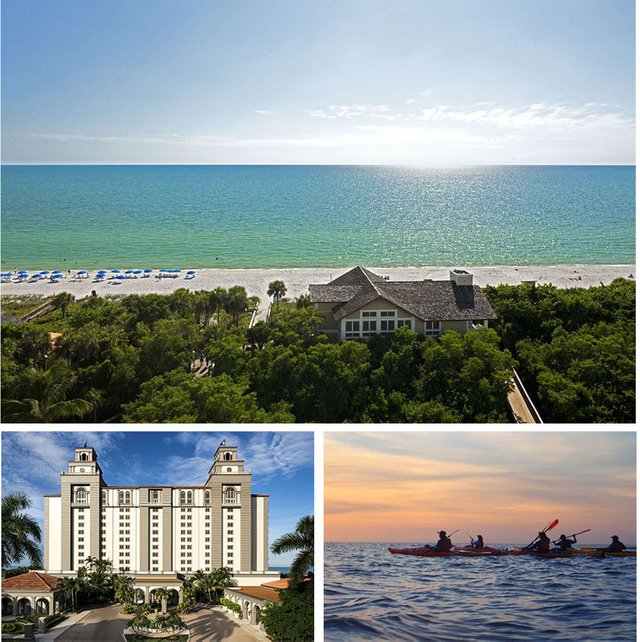
Tip
This is Florida, so the best time to visit is in the winter months, when the temperatures are cool. No matter when you visit, mosquitoes are an issue—so be sure to pack bug spray and wear long, light layers.
In-Bounds
NAPLES
Culturally, Naples is built for retired Northerners who come for the winter, and while it’s not known for being particularly hip, they don’t come for nothing—the beaches and sunsets here are out of a “Sunny Florida” postcard, and the Gulf’s water is calm and warm. The best place to stay is the Ritz, which is right on the water, with suites and activities that are built for kids. From here, you’ll access the park through the Gulf Coast Visitor Center, which is a great place to start a fishing expedition—we’ve heard good things about Everglades Fly Fishing Guides.
Out-of-Bounds
MIAMI
From Miami, you’ll enter the park at the Ernest F. Coe Visitor Center (the park’s main headquarters) via the Ronald Reagan Turnpike, so it’s most convenient to stay in Coral Gables, which is only a 50-minute drive away. Stay at the Biltmore, which is housed in a dramatic, European-inspired building that retains much of the charm it had when they first opened in the 20’s. The pool, needless to say, is a highlight.
Don’t Miss
WILDERNESS WATERWAY TRAIL
The park is famously home to the 99-mile Wilderness Waterway Trail, a boating trail (you can canoe, kayak, or take a fishing boat) that can be done in a few days, and involves camping on some of the most remote and gorgeous beaches in the country. Outward Bound does a manageable seven-day course that does all the heavy lifting for you.
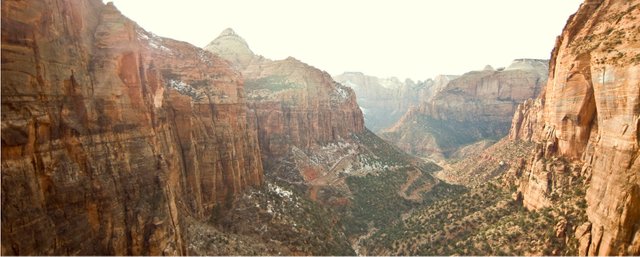
ZION NATIONAL PARK
Look up the meaning of the word Zion—the final gathering place of the true believer—and you’ll understand why the Mormon pioneers gave this epic expanse its name. Covering almost 150,000 acres in southwestern Utah, the terrain speaks of godliness with its red-hued cliffs and jewel-like Navajo sandstone—we get why so many renowned artists found inspiration here. Zion Canyon is the park’s centerpiece, which you can revel in by gazing up at the rock formations like Court of the Patriarchs. One of the coolest aspects of this park is its total intimacy—there are moments where you’ll find yourself walking through The Narrows and the canyon walls are so close you can spread your arms open and nearly touch each side. Given its southern location, temps soar in the summer, which is why we love to go in the fall. Also, since the park sits on a large elevation range, the fall colors extend into November.
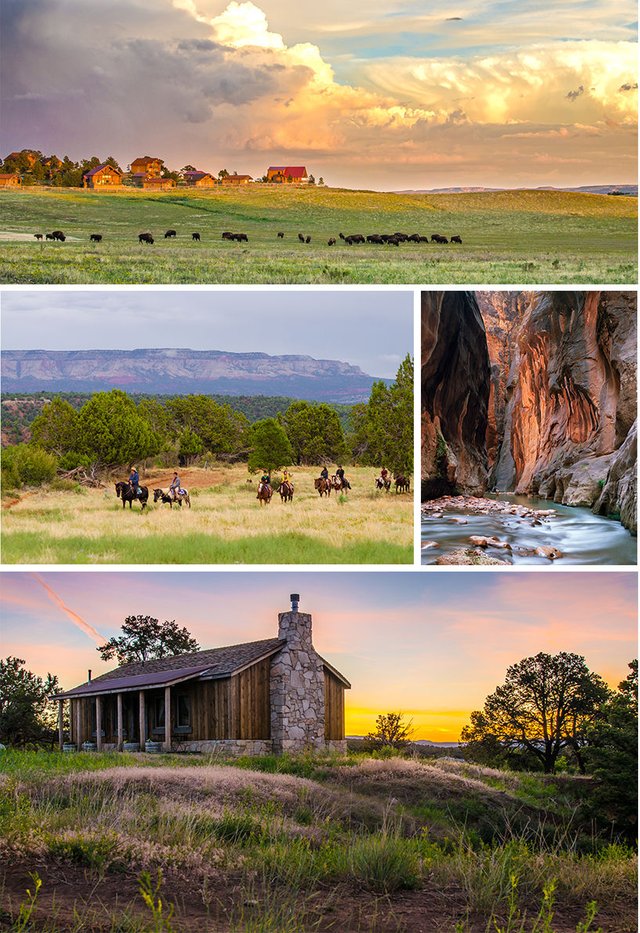
Tip
Pack two national parks in one day and take an afternoon trip to Bryce Canyon. It’s so worth the hour’s drive north to catch one of the glowing sunsets (or sunrises)—or consider Scott Dunn’s Utah Uncovered tour, which includes excursions to the Grand Canyon (you can chopper in), Zion, Bryce, Canyonlands, and Arches.
In-bounds
ZION MOUNTAIN RANCH
We have it on good authority that Zion Mountain Ranch is a total gem. Go here for canyoneering, night campfires, and horseback riding, as well as the incredible, life-changing landscapes and scenery. In fact, this National Register of Historic Places member is the only place to stay within the confines of Zion National Park. Top-notch restaurants and modern amenities are above and beyond what one might expect from such a remote location.
Out-of-Bounds
AMANGIRI
Located in the remote canyonlands of Utah, Amangiri has some of the best sunsets we’ve seen anywhere—and for good reason: The sky constantly changes as the sun shifts across the desert, bathing the already-dramatic buttes and mesas in pink and purple light. The resort itself is built into the landscape, and though the architecture is sleek and modern (the corresponding interiors are classic examples of the Aman’s brand of neutral, pared-down luxury), it all essentially blends into the rock. The surrounding desert offers plenty of activities, from rafting to horseback riding to hiking—even private plane rides over Lake Powell.
Don’t Miss
WEEPING ROCK TRAIL
A short, half-hour hike shows you this large, bowl-like sandstone rock formation where water drips down like rain. We also love Angels Landing Hike—but not if you have a fear of heights.
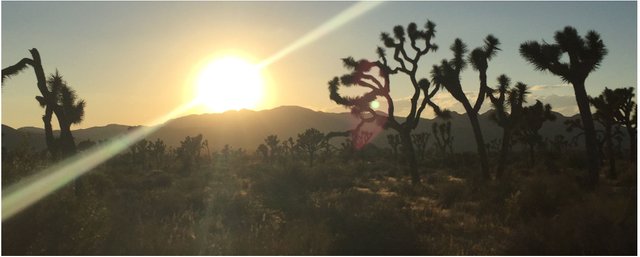
JOSHUA TREE NATIONAL PARK
An easy weekend getaway from Los Angeles, Joshua Tree looks like like something out of an alien movie, the vast desert dotted with bizarre rock formations and the oddly shaped trees for which the park is named. The remote, desolate environment and the dramatic sunsets have long made it a place for spiritual growth (through various, ahem, means), and the larger-than-life boulder piles are known for rock climbing, but it’s also seriously undersold for simple hiking and disconnecting. For a quick walkabout, try Skull Rock or Barker Dam, and for a great sunset (and excellent photo backdrop), head to the Chola Cactus Garden around golden hour. Though the harsh, water-scarce landscape makes survival a challenge, there’s also a lot of wildlife here if you keep your eyes peeled—the park is home to desert bighorn sheep, ringtails, kit fox, and big-eared hares, plus more than a few reptiles.
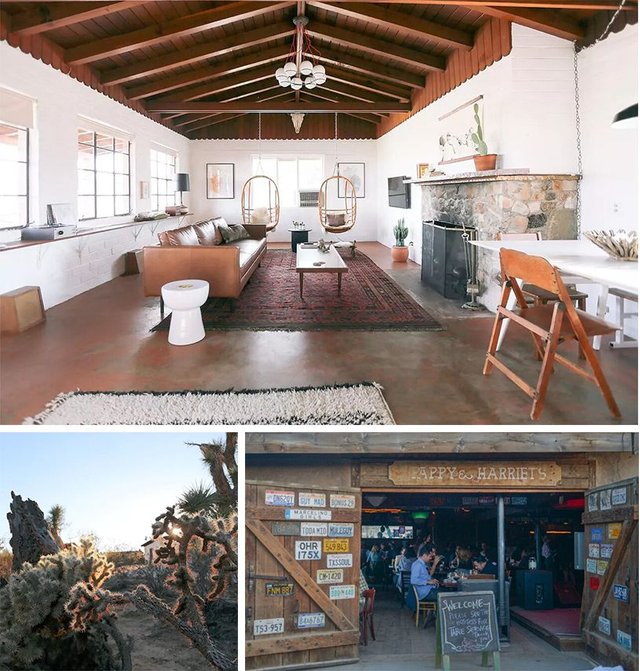
Tip
The desert has wide temperature swings, so do your research on the time of year—it can be sweltering in the summer months, and while the winter is actually very pleasant during the day, it can be a little cold for overnight camping (at some higher elevations, it actually does snow).
In-Bounds
AIRBNB
There aren’t many hotels in Joshua Tree, so if you want to stay near the park, an Airbnb is your best bet. This sweet little desert hacienda looks like something out of an interiors inspiration board, with a collection of midcentury furniture, a few antique wall hangings, and cozy white linens—plus a hammock and a porch with a view of the desert. There’s a hot tub outside, that’s best experienced underneath Joshua Tree’s famously starry sky.
Out-of-Bounds
THE PARKER PALM SPRINGS
Joshua Tree is a really doable day trip on a Palm Springs getaway, since the entrance to the park is only an hour from downtown. Our go-to is ever-reliable Parker—a desert oasis in its own right—which comes equipped with an incredible spa and two stylish pools for washing away the desert dirt.
Don’t Miss
JOSHUA TREE
The main entrance to the park is through the teensy town of Joshua Tree, which is full of cute little shops and restaurants. Check out La Copine for breakfast (someone once described it to us as Sqirl in the desert), Cactus Mart (for appropriate souvenirs), and The End (full of vintage finds). Pappy & Harriet’s in nearby Pioneertown is an amazing little dive bar that hosts great live music acts.
Congratulations @sawwatch101! You have completed some achievement on Steemit and have been rewarded with new badge(s) :
Click on any badge to view your own Board of Honor on SteemitBoard.
For more information about SteemitBoard, click here
If you no longer want to receive notifications, reply to this comment with the word
STOPCongratulations @sawwatch101! You have completed some achievement on Steemit and have been rewarded with new badge(s) :
Click on any badge to view your own Board of Honor on SteemitBoard.
For more information about SteemitBoard, click here
If you no longer want to receive notifications, reply to this comment with the word
STOPCongratulations @sawwatch101! You received a personal award!
You can view your badges on your Steem Board and compare to others on the Steem Ranking
Do not miss the last post from @steemitboard:
Vote for @Steemitboard as a witness to get one more award and increased upvotes!